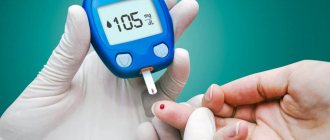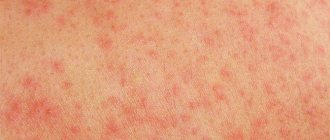Causes of heart attack
The main causes of myocardial infarction are atherosclerosis of the heart vessels, increased blood viscosity with the formation of a blood clot, and spasm of the coronary arteries. The following factors provoke and aggravate the development of these causes:
- hormonal disorders and disruptions - menopause, diabetes;
- long-term use of certain medications - hormonal drugs (oral contraceptives, corticosteroids), fat-soluble vitamins, hemostatic agents;
- hypertension;
- smoking - a bad habit causes vasoconstriction and oxygen starvation of tissues;
- obesity and lipid metabolism disorders in general - a change in the blood lipid profile towards an increase in low-density lipoproteins (LDL) leads to the formation of atherosclerotic plaques and atherosclerosis of blood vessels, including coronary ones;
- sedentary lifestyle;
- alcohol abuse provokes weakening of the heart muscle;
- frequent stress and psychological tension against the background of increased emotional sensitivity and coronary artery disease.
Causes of pre-infarction condition
The condition of pre-infarction is caused by a cessation of nutrition to the heart muscle due to blockage or spasm of blood vessels. Older women are most often affected by the following factors:
- hypertonic disease;
- IHD;
- diabetes;
- atherosclerosis;
- nervous fatigue;
- frequent stress;
- excessive physical activity;
- body hypothermia;
- bad habits: smoking, alcohol;
- excess weight.
The pre-infarction state can last for days or even weeks. It manifests itself in the form of squeezing pain or burning. Urgent measures are needed to normalize blood circulation in order to prevent the onset of the next phase of the disease - a heart attack.
Myocardial infarction: symptoms and signs
The development of symptoms depends on the form of the heart attack, its extent and type of manifestations.
The most important thing for the patient is the ability to recognize the symptoms of a pre-infarction condition. This will help you react in a timely manner and take life-saving measures.
The first signs of a heart attack:
- severe angina pectoris;
- dyspnea;
- labored breathing;
- pain in the abdomen;
- headache;
- discomfort in the chest area - a feeling of compression, pressure;
- discomfort in the upper body;
- feeling of anxiety and severe restlessness, insomnia.
The pre-infarction stage is observed in 50% of cases. It can last from 2-3 days to several weeks.
Following this, the actual acute myocardial infarction begins, which consists of several stages.
The most acute stage is manifested by severe sharp chest pain, which radiates to the neck, arms, and under the shoulder blades. The nature of the pain can be burning, bursting. The general pre-infarction symptoms include increased sweating (sticky, cold sweat), panic attacks, nausea, vomiting, pallor of the integument and mucous membranes, sudden surges in pressure, dizziness with loss of consciousness.
The acute stage is the most dangerous and decisive period in the development of a heart attack, lasting several days. During this period, the following may occur:
- rupture of the heart muscle;
- blockage of a coronary vessel by a thrombus;
- cerebral circulatory disorders.
Body temperature rises, the level of leukocytes increases sharply.
Subacute stage – the beginning of the pathological process subside, can take up to 1 month. At this time, it is necessary to reduce the temperature and level of leukocytes to normal values, restore blood circulation, start tissue regeneration processes and prevent the development of post-infarction syndrome.
The post-infarction stage is the final stage of pathology development with a period of active formation of scar tissue at the site of injury. It is at this stage that possible complications should be expected. If everything goes well, the patient’s condition quickly returns to normal.
Attention!
Without proper care and reparative therapy, 35% of patients may experience a recurrent heart attack within 3 years.
Signs of a heart attack in women
It is equally important to know what the signs of a heart attack are in women over 50 years of age. They differ in many ways from those observed in men.
The main differences are as follows:
- Pain attacks in women can spread from the chest to the abdomen and upper thigh. Sometimes the pain spreads to the arm, neck and even jaw.
- A couple of days before a heart attack, increased fatigue, apathy, and an extremely depressed state appear.
- The appearance of swelling of the palms, forearms, feet, thighs, cheeks, under the eyes, and the back of the neck.
- Swollen lymph nodes.
In women, heart disease can manifest itself as a disorder of the gastrointestinal tract. This is due to the higher location of the digestive organs. The pain in the heart radiates to the stomach area, thus causing spasms that provoke sharp pain and nausea.
A woman's body needs oxygen, so breathing becomes more frequent, but taking a deep breath causes pain.
Women over the age of 50 experience menopausal changes that are closely related to blood circulation. During a heart attack, the vascular system is subjected to additional stress, which can result in speech impairment, delirium, and hallucinations.
Women have a higher level of emotionality and are more susceptible to all kinds of unforeseen events. The slightest disruption of the heart can cause panic, and even fear of death.
[media=
https://youtu.be/3xK-bddQ6AE
]
Forms and types of myocardial lesions
Depending on the extent of damage, there are:
- small focal infarction - affects a small area of the myocardium and rarely leads to serious consequences;
- large-focal infarction - the symptoms are more serious, damage to a large area of the heart muscle requires long-term treatment, often leads to complications and can recur within 6-12 weeks, and death is possible.
Taking into account the characteristics of the symptoms, they distinguish:
- anginal form - with severe angina and pain in the throat;
- asthmatic form - with severe shortness of breath and chest pain, which quickly turns into suffocation and cardiac asthma. Accompanied by pulmonary edema, blue lips, severe cough and wheezing;
- gastralgic form - manifests itself as nonspecific stabbing pain throughout the abdomen and resembles an attack of peptic ulcer. Characteristic intestinal reactions are observed: nausea, vomiting, belching, bloating, diarrhea. As a rule, it develops with severe physical and mental exhaustion;
- cerebral form - with the absence of pain in the heart area and a general set of symptoms of a pre-stroke state: headaches, dizziness, nausea, vomiting. numbness or paralysis of the hands, slow speech;
- arrhythmic form - with severe arrhythmia and decreased blood pressure; accompanied by cardiogenic shock, which causes a decrease in myocardial contractility with a high risk of death. The situation is aggravated by the difficulty of identifying this form using an ECG;
- edematous form – there is extensive swelling of the body tissues with an enlarged liver. Often develops in people with heart failure;
- painless form - when painful sensations in the body are completely absent or greatly smoothed out;
- low-symptomatic form - can only manifest itself as severe fatigue and drowsiness. It is considered the most dangerous type of heart attack, as it is diagnosed too late for a successful treatment outcome.
The first symptoms in men
Male gender is one of the risk factors for the development of cardiovascular pathologies. Men are more likely to drink alcohol, smoke and experience stress. With age, the likelihood of the disease gradually increases.
Statistics show that in men, acute heart attack can be the initial manifestation of coronary artery disease. Many of them, even with pronounced signs of illness, do not always go to the doctor and undergo examination. Therefore, the disease is constantly progressing. Symptoms of a heart attack in men appear suddenly. They may be preceded by physical exertion, emotional distress, sudden hypothermia or overwork. Initial signs may be the following:
- Sharp dagger pain behind the sternum;
- Dyspnea;
- Smokers have an increased cough;
- Sticky sweat.
A person experiences a feeling of fear, which is clearly visible on his face. Painful sensations do not allow you to fully inhale or exhale.
They manifest signs of ischemia against the background of alcoholism and prolonged heavy drinking, atrial fibrillation, and atherosclerosis of the lower extremities. The pathology is combined with chronic obstructive pulmonary disease, which occurs due to smoking. Coronary syndrome can masquerade as acute pancreatitis, which occurs in patients with alcoholism. The following symptoms are of concern:
- Nausea, vomiting;
- Abdominal pain and bloating;
- Hiccups.
In older people, a heart attack can occur against the background of an existing arrhythmia. These can be various types of extrasystole or atrial fibrillation. The first and only sign is sudden cardiac arrest, which is manifested by loss of consciousness.
Complications
If the obstruction of the coronary artery is not corrected in time, the area of muscle tissue dies and is replaced by scar tissue. This provokes the development of a number of cardiac pathologies:
- arrhythmia – if during myocardial infarction there is damage to a section of the conduction system of the heart, a “short circuit” occurs with cardiac arrhythmia of varying degrees of severity;
- heart failure - with extensive damage, there is a lack of muscle tissue for full contraction of the heart and blood circulation; shortness of breath, fatigue, swelling occur;
- pathologies of valve function - with damage to nearby areas of the myocardium;
- cardiac arrest - when muscle tissue is weakened, especially with a repeated heart attack, myocardial ruptures are possible with immediate death.
Post-infarction syndrome, or Dressler's syndrome, is a complication with an autoimmune mechanism of development. Occurs in the 2nd week from the onset of the attack with a frequency of 3-4%. The body begins to perceive the cells of the heart muscle as foreign and attacks them, causing autoimmune pleurisy, pericarditis, pneumonitis, synovitis with a pronounced increase in body temperature up to 39 C and general weakness of the body. The risk of pathology is especially high with extensive and repeated heart attacks.
Kinds
Medicine broadly classifies heart attacks depending on different criteria. Thus, according to the size of the affected muscle tissue, the infarction can be small-focal (one or several small foci of necrosis) and large-focal (extensive necrotic lesion).
According to the depth of the necrotic focus, the infarction can be transmural (the necrotic area is formed in the area of the entire heart muscle), subepicardial (the necrotic area is located near the epicardium), subendocardial (necrosis is formed adjacent to the endocardium) and intramural (the lesion is formed in the left ventricle).
A heart attack can be:
- primary,
- repeated,
- recurrent.
The latter appears during the period of muscle scarring after the primary infarction. Depending on the development of complications, they speak of uncomplicated and complicated heart attack.
The periods of illness during a heart attack are divided into acute, acute, subacute, post-infarction.
Myocardial infarction
Myocardial infarction is damage to the middle layer of the heart muscle (myocardium). It is divided into several stages, the first of which is angina. Acute ischemia of the heart vessels refers to the most acute stage of myocardial infarction; the acute period is characterized by the formation of a necrotic area. In the subacute period, preparation for the formation of a scar in the affected area occurs; in the post-infarction state, a scar of the heart muscle is formed.
The stage of scar formation is not reversible; it is impossible to restore myocardial cells and avoid necrotic damage. After the disease, the affected area of the muscle does not participate in the contraction of the heart muscle.
Cardiomyocytes (heart muscle cells hit by a heart attack) die within 24 hours after the most acute stage of the disease. After 24 hours, the affected area can be clearly seen. After two weeks, the formation of connective tissue at the site of necrosis begins. It takes about two months for the scars to fully form.
Acute myocardial infarction
The main symptom of acute myocardial infarction is sharp chest pain, similar to severe squeezing. It differs from an attack of angina in that it is not controlled by medications and lasts more than 15 minutes. Pain extends to:
- spatula,
- neck,
- left shoulder,
- left hand,
- lower jaw.
The patient may lose consciousness. With atypical localization, the pain may be in the abdomen or spine.
An acute heart attack can be “prevented” by chest discomfort, weakness, and dizziness that occurs several days in advance.
In some cases, a heart attack may not cause severe pain. Tachycardia, weakness, nausea, general deterioration in health can become signs of an acute heart attack.
Extensive myocardial infarction
Extensive myocardial infarction is a large and deep lesion of the middle layer of the heart muscle. Due to the fact that the left ventricle of the heart bears a large load during cardiac contraction (it is from it that blood exits into the aorta under high pressure), a large infarction most often occurs in this part of the heart. At the same time, the atria and right ventricle can also be subject to extensive infarction.
The epicardium, myocardium and endocardium - layers of the heart muscle - with an extensive infarction experience deep damage, up to 7 cm in length. Like any heart attack, extensive damage to the heart muscle is a consequence of insufficient oxygen supply to the myocardium, resulting from the filling of the lumen of blood vessels with blood clots. The formation of a blood clot, in turn, provokes a new vasospasm. Such a “vicious circle” leads to blockage of the artery and a sharp limitation in the supply of oxygen to the heart muscle due to poor circulation. After circulatory arrest, myocardial cells begin to die within half an hour; a few hours after the artery is “blocked,” an extensive heart attack develops.
Brain infarction
A cerebral infarction, known as an ischemic stroke, develops against the background of impaired blood circulation in the brain and the supply of oxygen to its cells. Its causes, as well as heart attack, should be sought in increased thrombus formation and damage to vital vessels.
Therefore, the main task during a cerebral infarction is to restore blood flow through the thrombosed artery, minimize the risks of developing cerebral edema and convulsions, and reduce the risk of complications from the heart and blood vessels.
During intensive stroke therapy, blood pressure is constantly monitored and this indicator is maintained 10% above the patient’s “working” pressure in order to establish blood supply to the brain. Monitoring of heart rhythm and metabolic rates in the body is carried out.
For cerebral infarction, conservative treatment methods are used. Within 5 hours from the first signs of the disease, thrombolytic intravenous therapy is carried out to dissolve the blood clot that has blocked the cerebral vessel. Therapy is carried out only with the consent of the patient (he must be conscious) or his relatives with the exact time of hemorrhage confirmed by CT.
If it is impossible to perform thrombolysis, the patient is prescribed antiplatelet drugs that reduce the formation of blood clots.
For treatment after a stroke, aspirin, dipyridamole, and clopidogrel are used no later than 48 hours. Aspirin is also prescribed in the future; patients take it up to a year after the stroke.
Transmural myocardial infarction
This type of heart attack is associated with large damage to the layers of the heart muscle. In a typical heart attack, the myocardium (the middle layer of the heart muscle) is affected. With a transmural infarction, the epicardium and endocardium - the outer and inner layers of the heart muscle - are affected, while necrosis affects the heart through and through.
With a transmural infarction, the blood supply is disrupted in the coronary artery basin. Immediately (within one minute) after the onset of acute ischemia, the force of contraction of the heart muscle over a wide area and depth decreases. The nature and size of the damage depends on various factors, including the need of the heart muscle for the intensity of blood supply, the ability of the vessels to take over the function of blood supply to the thrombosed artery, and the duration of development of the pathology.
Diagnosis of heart attack
A timely and competent diagnosis can save the patient’s life. With immediate treatment, there is a chance to restore the functional activity of the heart even with extensive damage.
Attention!
During a medical interview, it is very important to describe any subjective sensations, even the most insignificant ones. It is also necessary to provide comprehensive information about your health in general.
The main diagnostic methods are instrumental examination and laboratory tests.
Carry out:
- ECG - a graph with the performance characteristics of cardiac structures helps to identify the main area of the infarction; determines the frequency and rhythm of the heartbeat, the presence of thromboembolism, changes in the heart muscle, etc.;
- echocardiography (ultrasound) – reveals failure of contractility of the heart muscle and localization of the pathological focus;
- myocardial scintigraphy (radioisotope study) - the principle of operation of the method is that a radioisotope substance accumulates in the damaged area;
- coronary angiography – determines the condition of the heart vessels and the presence of blood clots;
- positron emission tomography – to identify areas of muscle tissue with circulatory disorders;
- MRI, CT - to form a general picture of the structures of the heart - size, condition of the chambers, presence of hypertrophies, blood clots.
Laboratory tests include general and biochemical blood tests, as well as tests to determine cardiac-specific markers - enzymes that are released into the blood when the heart muscle tissue is damaged.
Cardiac specific tests:
- troponin test is the most sensitive in an acute process, the standard for rapid detection of necrotic changes in the heart muscle. The higher the concentration, the larger the focus of necrotic changes. Enzyme levels begin to rise 3-4 hours after the attack and reach peak values after 48 hours;
- myoglobin test - myoglobin begins to increase after 2-3 hours and reaches a maximum after 10 hours, its concentration depends on gender - in men it will be higher with an equal volume of lesions;
- lactate dehydrogenase test - determines the level of LDH-1, which is released into the blood 8 hours after an attack and reaches its highest values after 3 days;
- creatine phosphokinase test – detects the MB fraction of creatine phosphokinase; its values increase after 4-8 hours, reaching a maximum after 24 hours, but quickly fall;
- aspartate aminotransferase (AST) test is the least specific test, since AST is found in large quantities in other organs and tissues; used as an additional indicator of acute condition. at which its level can increase by 5-20 times the norm.
General and biochemical blood tests reveal:
- increase in leukocyte levels;
- increased ESR;
- “inflammatory” proteins – C-protein, fibrinogen, gamma globulin, etc.
Treatment
To obtain the best results, treatment for myocardial infarction should begin as soon as possible. Basic measures are carried out immediately after hospitalization, before the end of the main diagnosis:
- eliminate pain syndrome - use drug therapy using a different range of drugs - starting from nitroglycerin (sublingual, intravenous) and ending with morphine injections;
- restore blood circulation - use thrombolytics, anticoagulants, antiplatelet agents.
Further therapy, depending on the examination data, is aimed at preventing and eliminating arrhythmias, cardiogenic shock, and heart failure. Antiarrhythmic drugs, antispasmodics, sedatives, adrenergic blockers, etc. are prescribed.
Prevention of heart attack
The goal of primary prevention of myocardial infarction is to combat coronary heart disease and eliminate risk factors. Quitting smoking, maintaining an active lifestyle, systematic moderate physical activity, maintaining normal body weight, and a balanced diet will help prevent the development of a heart attack.
Secondary prevention aims to combat the development of recurrent infarctions: preventive measures include the prescription of anticoagulants, β-blockers, and calcium antagonists. An important point is to ensure patency of the coronary artery. This can be accomplished by cardiac bypass surgery or stenting of cardiac vessels.
If you need an examination to identify risk factors or treat a heart attack, the ABC-Medicine clinic offers you its assistance. To ask any question you are interested in about diagnosing a heart attack or any other aspects of the problem, as well as to make an appointment with a specialist, call +7.
First aid for heart attack
If you detect symptoms of a pre-infarction condition or a completed heart attack, the first thing to do is call an ambulance:
- 103 – medical service telephone number;
- 112 is a single emergency number.
These numbers work for both mobile and landline phones.
Before the cardiac team arrives:
- remove the victim from any physical activity;
- put him in bed, slightly raising the head of the bed;
- loosen tight clothing - unbutton the collar of your blouse/shirt, belt, remove narrow shoes;
- try to calm the person down - talk to him, give him water to drink;
- if there is no negative reaction to aspirin, give 1-2 tablets to slow down the growth of the blood clot;
- provide fresh air access to the room - open windows and doors;
- monitor blood pressure and pulse while waiting for the ambulance to arrive;
- If you lose consciousness, perform cardiopulmonary resuscitation.
Important!
For high blood pressure, if the victim is taking nitroglycerin, place a tablet under the tongue. If the patient has not encountered this drug, as well as with low blood pressure values, the use of nitroglycerin can greatly “drop” the pressure.
Prevention
Considering the severity of the consequences of a heart attack, it is much more promising to direct your efforts to prevent it. The list of basic preventive measures includes:
- correction of diet - exclude fatty, fried, smoked, salty and sweet foods; give preference to vegetable oils with a high HDL content (flaxseed, mustard, cedar), fresh fish and seafood, fresh vegetables, fruits, berries, nuts and seeds, whole grain cereals, meat, poultry and dairy products with a low fat content;
- maintaining a physical activity regime - do cardio training, fitness, swimming; practice evening walks or jogging, try to be in the fresh air more often - this not only helps burn fat, but also strengthens the heart muscle and keeps blood vessels in good shape;
- give up bad habits;
- try to avoid prolonged stress and psychological overload;
Periodically monitor your lipid profile, sugar levels, and blood pressure values.
On a note!
Diabetes is closely related to atherosclerosis - where there is one pathology, the shadow of another is invisibly present. Therefore, for those who are at risk, attention to blood counts should be tripled.
And, of course, do not forget about preventive examinations by a specialist.
Causes and risk factors
A person needs to be aware of the risk factors so that they can take steps to prevent a heart attack.
There are some heart attack risk factors that people can control and others that they cannot.
Risk factors include:
- Age: men and women over 60 years old.
- Gender : Men are more likely than women to have and die from a heart attack.
- Family history: People with a family history of cardiovascular disease are more likely to suffer a heart attack.
- Race and ethnicity : Some ethnic groups, including African Americans, some Asians, and Mexican Americans, are more likely to have a heart attack than others.
Although people cannot influence the risk factors listed above, there are many risk factors they can change or treat to prevent a heart attack.
Modifiable risk factors for heart disease and heart attack include:
- obesity
- high blood pressure
- high cholesterol
- diabetes
- unhealthy diet high in saturated fat and sodium
- tobacco use
- excessive alcohol consumption
- not enough exercise







